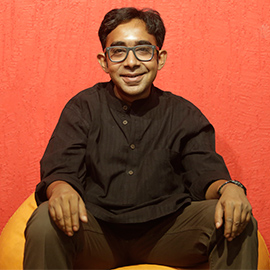Innocent teen or terrorist? Who was #IshratJahan & why she had to die

More than a decade after she was killed, Ishrat Jahan is, yet again, the subject of a raging debate.
David Coleman Headley, who allegedly scouted the 26/11 targets for the Lashkar-e-Toiba, has controversially told a Mumbai court that Ishrat, too, was an LeT operative.
Here's a brief profile of Ishrat and why she continues to polarise opinion long after she was buried.
Also read - Ishrat an 'LeT operative' says Headley, prosecutor Nikam gets flak for 'prompting'
Who was Ishrat Jahan?
The 19-year-old was the second of seven siblings of a poor Muslim family from Mumbra, a Mumbai suburb. According to her mother Shamina Kausar, Ishrat did sewing and gave private tuition to support the family as well as her education. She was a student of Guru Nanak Khalsa College.
According to her family, Ishrat got to know one Pranesh Pillai, who the police claim changed his name to Javed Sheikh after converting to Islam.
Pillai reportedly offered Ishrat a job as a salesperson in Gujarat, and she agreed to go with him.
Also read - MHA refuses sanction to prosecute IB officials in Ishrat Jahan case
[subheadingWhy was she killed?]
The Gujarat police dispute the family's story. They claim that Ishrat, Pillai and the two other men she was travelling with in Gujarat - Amjad Ali Rana and Zeeshan Johar - were LeT operatives, out to assassinate the then chief minister Narendra Modi.
A team of the state's Crime Branch intercepted their blue Indica car in Ahmedabad in the early hours of 15 July 2004 and killed them after a shootout.
The "operation" was led by DIG DG Vanjara, who was later imprisoned for his involvement in another fake encounter case, of Sohrabuddin Sheikh.
#IshratJahan 'encounter' was led by DG Vanjara, who was later jailed for Sohrabuddin fake encounter
The police claimed that they had been alerted about the "would-be assassins" by the Intelligence Bureau. As proof of the slain group's "mission", the police showed on TV a cache of automatic weapons allegedly found on them.
When she was shot dead, Ishrat was still wearing her college ID card around her neck.
What's the controversy?
Rejecting the Gujarat state's claims, Ishrat's family as well as activists have alleged that she and her fellow travellers were murdered in a fake encounter. The police officers carried out the killings, they have alleged, to appease their political masters, and get rewards and promotions.
The allegation was substantiated, nearly four years after Ishrat's death, by the judge SP Tamang's magisterial inquiry, which concluded that the "encounter" was fake.
The Gujarat government appealed to the Gujarat High Court, which stayed Tamang's report and hauled him up for acting outside his mandate. The court then set up a Special Investigation Team to probe the killings.
SIT probe into #IshratJahan encounter said Narendra Modi, Amit Shah knew about the illegal killings
The SIT investigation, led by the CBI, brought trouble for Modi and his Man Friday Amit Shah. Drawing on a tranche of official documents and phone call records, the SIT concluded that Modi and Shah were in the know about the illegal killings.
Indeed, the SIT suggested that Shah might have given the go-ahead for the encounter despite knowing that it was illegal.
The SIT's report kicked up a political storm, but yielded little. No one has been punished so far. Indeed, some of the accused officers like PP Pandey, who was bailed out in the case only this week, have been promoted.
More in Catch - Did Headley really call Ishrat Jahan a suicide bomber?
Headley takeaway: Don't count on Pak to give up on terror
The deadly Headley revelations: what the LeT operative said in court






![BJP's Kapil Mishra recreates Shankar Mahadevan’s ‘Breathless’ song to highlight Delhi pollution [WATCH] BJP's Kapil Mishra recreates Shankar Mahadevan’s ‘Breathless’ song to highlight Delhi pollution [WATCH]](https://images.catchnews.com/upload/2022/11/03/kapil-mishra_240884_300x172.png)

![Anupam Kher shares pictures of his toned body on 67th birthday [MUST SEE] Anupam Kher shares pictures of his toned body on 67th birthday [MUST SEE]](https://images.catchnews.com/upload/2022/03/07/Anupam_kher_231145_300x172.jpg)






